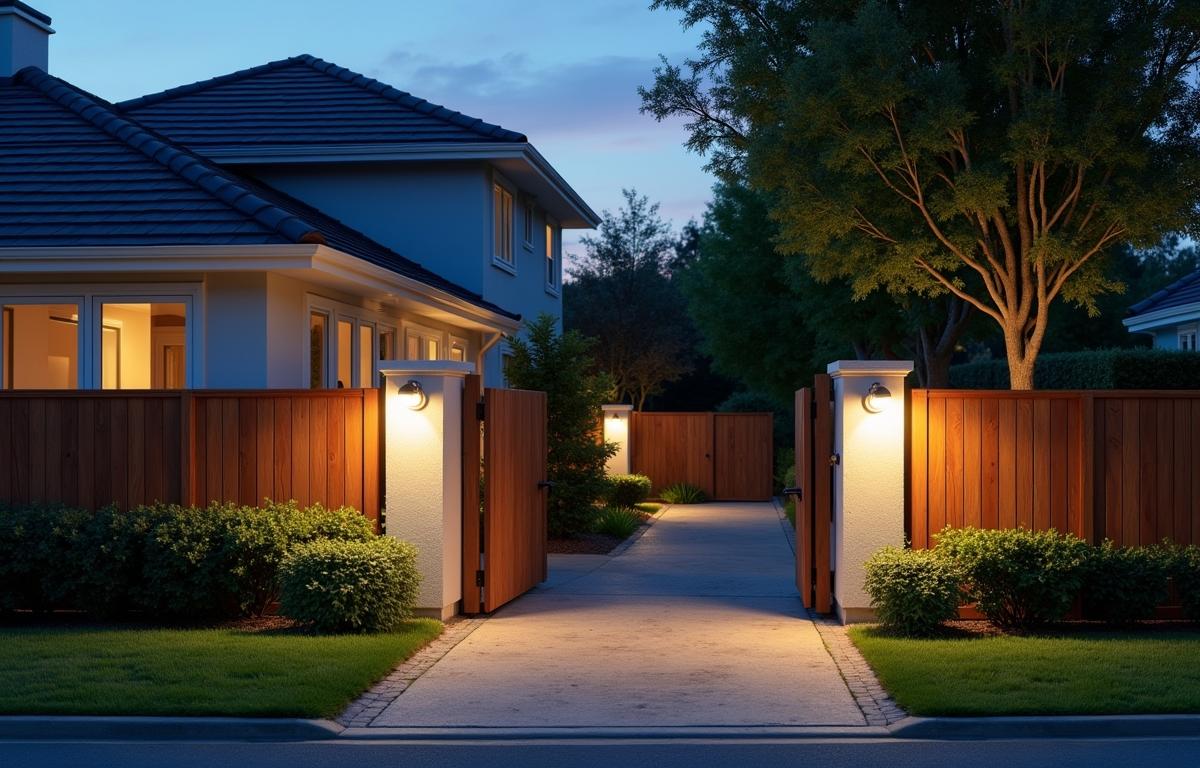
How to Set Up a Home Security Perimeter
Your home’s first protection from external threats is setting up a security perimeter. Knowing how to deter intruders before they reach your front door can boost your peace of mind. When you invest time and effort into safeguarding your property’s boundaries, you establish a strong line of defense that discourages trespassing. This outer ring of protection often involves clear visibility, sturdy barriers, and a thoughtful approach to detecting suspicious activity.
At the same time, a solid plan can adapt to the unique aspects of your home. Properties differ in size, shape, and neighborhood setting, so one option may not fit all situations. Yet certain broad principles, like reinforcing fences, installing security cameras, and using motion sensors, typically apply across the board. The key is to combine these tactics in a way that suits your environment and daily routines.
Building a Solid Foundation
Before adding specific tools and devices, it helps to visualize your property’s entire perimeter. Take a walk around the exterior, paying attention to any weak spots like missing fence panels or shrubbery that might block your view. Also, think about where thieves might hide or bypass security efforts. This initial inspection allows you to prioritize changes without getting overwhelmed.
Follow through by drawing a rough map of your property. Mark entry points, such as gates and doors, and note areas that appear dimly lit at night. Look for any potential blind spots where cameras or motion sensors might be required. This early legwork lays a foundation so you can accurately budget your security upgrades and avoid wasting money on items that might not help.
Using Strategic Fencing and Landscaping
A fence is often the first major barrier outside your home. While chain-link fences may suffice in some places, a more solid option, such as wood or metal, can discourage casual trespassing. Make sure the fence is high enough to hinder climbing but still follows local regulations. If possible, opt for a design that isn’t easy to grip or foothold.
Selecting the Right Materials
Choosing materials can depend on climate and neighborhood style. Vinyl offers a low-maintenance option, but steel is more durable against forced entry. While hedges or shrubs can serve as natural barriers, keep them trimmed to reduce hiding spots. In the same vein, avoid tall or dense bushes right in front of windows these can give intruders a perfect place to stay out of sight.
Placing Outdoor Lighting and Motion Sensors
Dark corners and unlit spaces can be an intruder’s best friend. By installing sufficient outdoor lighting, you limit their advantage and also give neighbors or passersby a clearer view. Motion-activated floodlights are especially useful along dark walkways, near the garage, or around entrances. When someone steps into the range, the sudden burst of light can deter potential trouble.
Balancing Visibility and Energy Use
While keeping your property lit at all hours is one strategy, motion-activated solutions can reduce energy costs. You can also install solar-powered lights around the yard to brighten up the darker areas without running extra wiring. The most important element is positioning your lighting in a way that creates as few shadows as possible. Shadows can hide a person’s movement, undermining the overall benefit of having lights in the first place.
Securing Doors and Windows
Even if you build an effective barrier outdoors, a burglar who does manage to cross the perimeter will test your doors and windows for vulnerabilities. Solid doors with reinforced frames make a powerful statement against forced entry. Consider upgrading basic locks to deadbolts and using window security film to hold glass together if someone tries to break it.
Try to remain consistent with each access point. For instance, if your front door has a smart lock, but the back door relies on a flimsy chain, that discrepancy can be exploited. Don’t forget about garages and sliding patio doors. Adding door sensors or extra locks can go a long way toward deterring break-ins. This consistency ensures uniform security at every possible point of entry.
Installing Security Cameras
Cameras aren’t just about recording who did something; they also act as a deterrent if placed in visible spots. The best approach is to position them near common entry pathways, such as front doors, driveways, and easily reached windows. Wide-angle models capture more space, so you can reduce the total number of devices required.
Choosing Between Wired and Wireless
Wired cameras often provide a more stable connection and consistent video quality. However, they take a bit more effort to install since you need to route cables. In contrast, wireless systems are more flexible and easier to set up in tricky spots. Whichever route you pick, ensure the footage is stored securely, either in the cloud or in local storage with backups. High-definition or 4K cameras make it easier to identify individuals and license plate numbers, especially if something goes wrong.
Enhancing Monitoring with Smart Devices
Modern home security solutions focus on remote monitoring and real-time alerts. Installing smart alarms, sensors, and connected locks allows you to keep an eye on things even when you’re miles away. If a sensor trips, your smartphone immediately gets a notification, giving you a chance to respond. This instant reaction can be the difference between a minor concern and major damage.
Beyond basic alarms, you can add doorbell cameras shaped as friendly additions. These popular devices show who’s at the door before you open it. Having that real-time feed offers peace of mind, particularly if you have children or elderly family members at home. Pair these systems with smart home hubs so that you can manage everything lights, cameras, alarms from a single app.
Planning for Maintenance and System Updates
A security setup isn’t something you can put in place and forget. Over time, weather conditions, natural wear and tear, and new technology developments might require you to adjust your approach. Regularly test your devices to confirm they still work as intended. Check cameras for dirt or obstructions, replace batteries in motion sensors, and update app software to stay current.
Adapting to Seasonal Changes
Seasonal changes can also impact your security approach. Snowfall might affect sensor performance or camera placement, while summer growth can clog sightlines with dense foliage. Snap a few photos of potential issues and schedule routine checkups to address them. Staying proactive reduces the chances of discovering a critical fault too late.
Maintaining a Strong Neighborhood Presence
It’s easy to focus on what’s happening within your property lines, but a broader perspective makes a huge difference. Friendly relationships with neighbors can help you spot unusual behavior. They might call if they see a suspicious car parked outside your home or notice an unfamiliar face strolling around your lawn. Simple neighborly interactions create informal watch systems that complement any gadgets you install.
Furthermore, if your neighborhood has an organized watch program, consider participating. Regular meetings and group alerts can speed up responses to criminal activity. This shared vigilance extends well beyond your personal yard and helps foster a community that bandits tend to avoid. A neighborhood that looks out for each other reduces the overall risks and keeps everyone’s property safer.
Putting It All Together for a Reliable Perimeter
Each aspect fences, lighting, cameras, and smart devices plays a part in forming an effective ring of security. When they’re integrated thoughtfully, each measure backs up the others. A fence slows down intruders, motion lights reveal them, cameras record their presence, and sensors alert you in real time. You end up with a system that’s bigger than the sum of its parts.
In the end, consistent maintenance, smart planning, and neighborly involvement reinforce your home’s borders. By examining your unique layout and making steady improvements, your home becomes far less tempting to possible trespassers. Whether you choose high-tech gadgets or simpler mechanical safeguards, the sense of safety you gain is worth the effort. When all is said and done, it’s comforting to know your property has multiple layers of protection ready for anything that comes its way.
